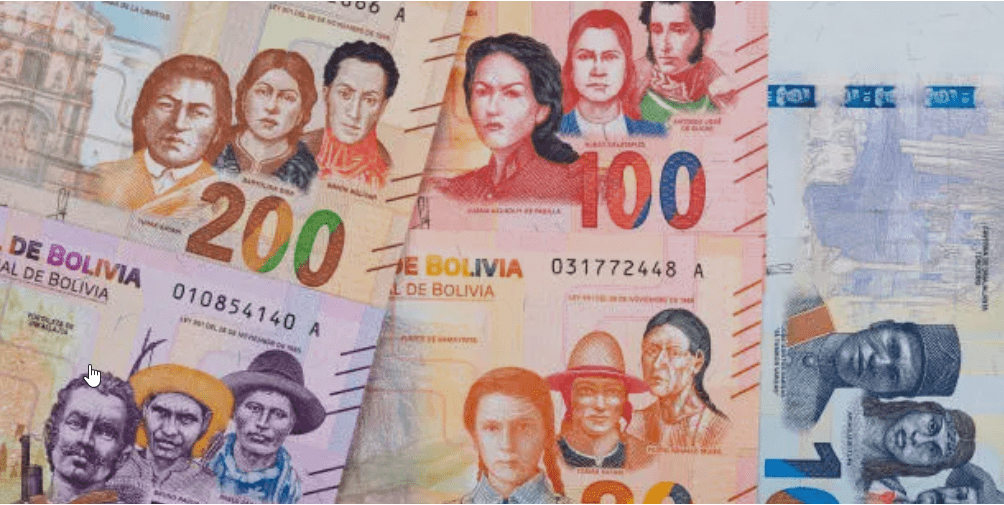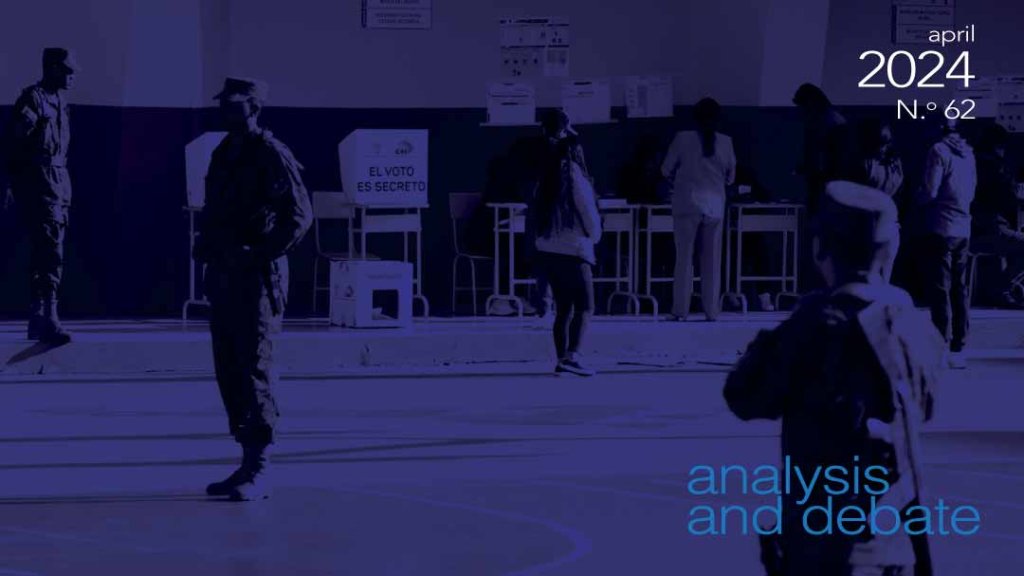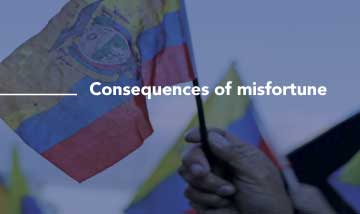Understanding Latin America
Dear readers and colleagues, this month we bring you six articles that reflect the reality of Latin America, one each from: Ecuador, Argentina, El Salvador, the Darian Gap between Colombia and Panama, as well as Brazil and Mexico.
There is an unfortunate connection between several articles this month: the mounting violence afflicting countries across the continent. This violence isn’t always enacted solely by armed groups who control the illicit economies and large swaths of the region today, but in many cases have been propelled by the state itself. This can be seen in the increased corruption and austerity measures that have facilitated the rise of violence in countries like Ecuador, or in the military response to organized crime, in countries like El Salvador. The following articles highlight some of the problems facing communities across the region but also show how the war on drugs has long been a failure.
- Drugs and austerity are behind the gang violence in Ecuador
- Javier Milei wants to ignite a far-right cultural revolution
- Nearly one million salvadorans on the verge of starvation
- The Darien Gap migration crisis in six graphs, and one map
- The Landless Workers’ Movement at 40
- Crossing the storm: EZLN marks 30 years with a 120-year plan
.
DRUGS AND AUSTERITY ARE BEHIND THE GANG VIOLENCE IN ECUADOR
The new year began in Ecuador with a shocking scene: on 9 January, roughly a dozen armed, masked men stormed the studios of a popular TV station, TC, interrupting a live broadcast and threatening staff on air. The public display shocked the country, which has already seen massive increases in violence over the past two years. President Noboa responded by declaring an “internal armed conflict” against the 22 criminal gangs that operate in the country, which he labeled as “terrorists.” Will this be enough to solve the problems in Ecuador? In this Q&A article, social scientist and security specialist Fernando Carrión reflects on how Ecuador got here, including a history of failed U.S. drug policies that has systematized the military response to the war on drugs in the region since 1999, and the dismantling of the state apparatus by Ecuador’s past Presidents. Today, not only are these gangs the main employers of young people in the country, they also infiltrate state institutions through corruption and intimidation, says Carrión. It’s time, he says, for Latin American governments to cooperate and develop an independent, coordinated security policy, rather than keep depending on global institutions that support and promote austerity, more military and more weapons.
Fernando Carrión, Karin Gabbert, February 1, 2024
https://www.rosalux.de/en/news/id/51545/drugs-and-austerity-are-behind-the-gang-violence-in-ecuador
.
JAVIER MILEI WANTS TO IGNITE A FAR-RIGHT CULTURAL REVOLUTION
With less than a month in office, Argentina’s new President Javier Milei has already managed to make heads spin after his noteworthy speech at the 2024 World Economic Forum. Among other things, he called the Davos elite a “socialist cabal,” offending some and confusing others. But back at home, Argentines have already started experiencing the slash-and-burn approach Milei promised during his campaign. He has already announced his intention to deregulate and liberalize the economy, sell off public assets, drastically cut spending, and raise taxes on low-income earners, all in the name of eliminating the country’s deficit. The measures are contained in an omnibus bill already being debated in Congress. In the meantime, minister of security, Patricia Bullrich, has essentially declared war on any sort of protest and announced that public demonstrations are hereafter criminalized, which could lead to an authoritarian scenario. In this Q&A article, historian Pablo Pryluka answers questions about Milei’s administration and what we can expect during his presidency. Milei ’s crusade is not just about reaching a perfect libertarian utopia, he says, it’s also about ending a long national history of collective action, organized labor, and popular solidarity. Milei is really trying to ignite a cultural revolution, says the historian.
Nicolas Allen & Pablo Pryluka, January 22, 2024
https://jacobin.com/2024/01/javier-milei-far-right-cultural-revolution/
.
NEARLY ONE MILLION SALVADORANS ON THE VERGE OF STARVATION
In El Salvador, nearly half of the population suffers moderate to severe food insecurity, meaning they do not eat enough, can go days without eating anything, and do not know whether they will have food in the immediate future. By the end of 2022, international organizations warned that roughly 907,000 people were on the verge of famine. Inflation, crop failures due to climate change, and lack of agriculture subsidies have contributed to this increasing number, but so has President Nayib Bukele’s long-standing state of exception that has resulted in the mass imprisonment of more than 73,800 people, or 1.2 percent of the population. The mass arrests have left El Salvadoran families with less income, either because a family breadwinner was detained, or because the household must now divide what little they earn between usual expenses and the prison packages they now purchase to provide basic necessities to their incarcerated family members. In El Salvador’s Presidential elections on February 4, Bukele won a landslide victory, with provisional results 24 hours after elections showing he received at least 83% of the votes. His New Ideas party is expected to win almost all of the 60 seats in the legislative body, tightening its grip on the country. How have El Savadoran families really been living in Bukele’s government?
Julia Gavarrete, January 19, 2024
https://especiales.elfaro.net/en/hunger
.
THE DARIEN GAP MIGRATION CRISIS IN SIX GRAPHS, AND ONE MAP
A record 520,000 people crossed the Darian Gap, the dense jungle terrain that connects Colombia and Panama, last year. Most are making their way north with hopes of entering the United States. This isn’t a new migration route, but less than a decade ago only a few thousand people dared to make the trek. The crossing is not an easy one, as it takes days or even weeks, depending on your physical condition, and is increasingly controlled by armed groups. Experts are expecting the number of people crossing the Darian to surge again in 2024 as more and more people decide that living conditions in their home countries have become unbearable. Venezuelans are by far the largest population to cross the Darien Gap, but there are also large numbers of Ecuadorians, Haitians, Colombians, and others outside the region like the Chinese. As more aid organizations are now present in the Darien Gap, we have a better idea of who these migrants are, where they come from, and the difficulties they face. For example, in 2023, there were nearly double the amount of people seeking psychological and medical help after facing sexual assault while crossing the Darien Gap compared to 2022. Data also shows the number of children making the crossing skyrocketed in 2023 compared to previous years. Can this new data also help us find solutions?
Daniela Mohor, January 15, 2024
.
THE LANDLESS WORKERS’ MOVEMENT AT 40
January marked the 40th anniversary of one of the largest social movements in the Americas, Brazil’s Landless Workers’ Movement, or MST for its name in Portuguese. The MST began as a group of displaced farmers, who started to use Brazil’s own legal system to redistribute unused and unproductive land, often in the hands of rich landowners, to those in need. Over the past four decades, the movement has helped over 350,000 families receive land titles, who otherwise would not have been able to. Today, Brazil is still one of the world’s most unequal countries and has a deeply entrenched system of rural exploitation by its large agricultural elite. Despite all this, the MST has made progress not only in land redistribution but also in educating the people. Over the past four decades, they have helped 100,000 Brazilians become literate. Its alternative educational initiatives are centered on creativity and critical thinking, inspired by educator and philosopher Paulo Freire. According to the movement itself, their primary goals are to feed the hungry and educate the people. How can the movement inspire others to reduce rural inequality across the Americas?
Liam Crisan, January 26, 2024
https://www.counterpunch.org/2024/01/26/the-landless-workers-movement-at-40/
.
CROSSING THE STORM: EZLN MARKS 30 YEARS WITH A 120-YEAR PLAN
Mexico’s Zapatista Liberation Army celebrated the 30th anniversary of its first uprising this year, at the same time as they undergo a massive restructuring of their organization to prepare for the future. Some of these structural changes include: dissolving the 30 Zapatista Rebel Autonomous Municipalities (MAREZ in Spanish) as well as the 12 Good Government Juntas. They will maintain the 12 caracoles, or community gathering points, but will keep them closed to outsiders until further notice. The media was quick to associate the EZLN changes with the growing violence in the state of Chiapas, where armed groups like the Sinaloa and Jalisco New Generation cartels have a strong presence. The EZLN’s Subcomandante Moisés acknowledged this violence in a communiqué, saying the cities in southern Chiapas are in complete chaos where blockades, assaults, kidnappings, forced recruitments, and shootings have become commonplace. But the EZLN denies that their re-organization is a response to violence, rather it’s a response to global climate change, political disintegration, and depopulation. At the center of their new organizational structure is an experiment with a new kind of property ownership, what they call the “non-ownership of land,” which will be essential to “cross the storm and reach the other side safely,” they say.
Ann Louise Deslandes, January 19, 2024
https://nacla.org/crossing-storm-ezln-marks-30-years-120-year-plan





